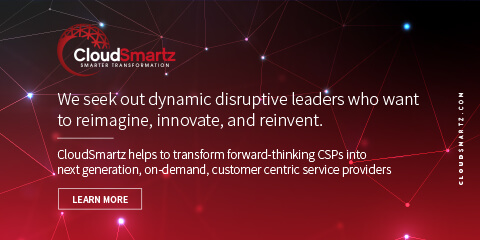Communications Platforms Give CSPs Powerful Tools
By: Sacha Gera

For the last two decades, the same communications service providers (CSPs) that dominated voice, SMS and other communications applications have been up against incredibly popular and fast-growing OTT offerings from companies like WhatsApp, LINE, Snap, Viber, Telegram, WeChat, Kik, Tango, Twilio and Skype. Given their combination of powerful IP-based networks, CSPs can launch competitive apps with better quality of service, more security and creative features that are especially valuable to business and enterprise customers.
Communications Platforms as-a-Service (CPaaS) are making it easier, faster and less expensive to embed voice, messaging, chat and video into customer experiences. Moreover, visionary CSPs like AT&T are opening up new ways to serve their business customers while driving new revenue streams by offering low code/no code options for implementing real-time communications (RTC) features.
Let’s look at the contact center industry, for example. Here, CPaaS-based applications that enable customers to get their questions answered from a specific webpage, social media site or mobile app— without having to wait for a live agent—are increasingly gaining traction. This adds up to better service at a much lower cost. Contact center business process outsourcing companies are resolving problems faster, while offering an automated path to reach a live expert, depending on the nature of each customer’s inquiry. CSPs have a long history in contact center solutions. As the sale of basic infrastructure (circuits, for example) is being displaced with software defined networking (SDN) and the related SD-WAN—and SIP trunking continues to flourish—they can now offer applications that run better on their networks, given that they own and operate fiber and access solutions.
CloudSmartz Whitepapers
- Redefining Telecom
- OpenKilda: Lessons Learned
- Telecom in the Age of the Cloud
- DevOps-as-a-Service
- Real-Time IT for CSPs
About CloudSmartz
CloudSmartz is a challenger in the industry for Lifecycle Service and Customer Orchestration, enabling digital transformation for Communications Service Providers (CSPs) around the
world. We are considered an orchestrator-of-orchestrators – we act as an innovation enabler on the service-provider and customer-facing layer, which helps CSPs to operationalize
and monetize their back-end technology infrastructure investments through our innovative microservice architecture. Our mission is to help transform forward-thinking CSPs into
next-generation, on-demand, customer-centric service providers. We seek out dynamic disruptive leaders who want to reimagine, innovate, and reinvent. Gartner has recently named
CloudSmartz as a 2018 Cool Vendor In Communications Service Provider Business Operations – and 451 Research shares that our solutions bridge the gap between the carrier's new
virtualized SDN/NFV network and the carrier's OSS/BSS systems so the carrier can move from deploying a network to deploying services and generating revenue. Our global offices
around the worlds are proud to have been recently awarded, “Most Innovative Technology Provider” & “Innovations in Aggregation” by Pipeline Magazine – and as of 2019, Inc. 5000
named CloudSmartz one of America's Fastest-Growing Privately-Held Companies for Four Consecutive Years in a row (2016, 2017, 2018, 2019).
CPaaS also allows CSPs to fight back against challengers by selling CPaaS as flexible, opex “subscription” or “by the seat” services, which can be sold, implemented and managed faster than legacy solutions with onerous long-term contracts that can take six months or longer just to negotiate.
The old-world requirements of “ripping and replacing” communications stacks are being replaced with CPaaS technology and packages, including application programming interfaces (APIs) and software development kits. These attract developers—in many cases the same developers who have adopted embedded communications code from CSP challengers like Twilio. To avoid being relegated to the “plumbing,” CSPs can generate new revenue streams at much higher margin when they roll out CPaaS-based enterprise and business solutions.




















